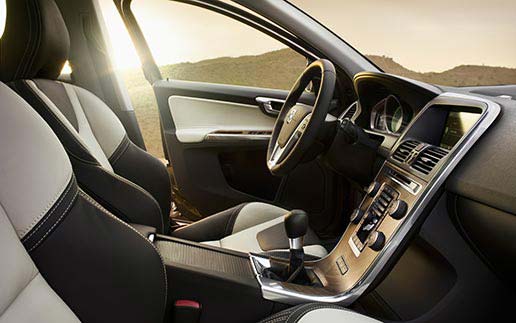How to Drive a Stick Shift

At first, driving a stick shift can be intimidating. But you’ll soon learn the secret!
Driving Stick in 7 Easy Steps
So, you’re learning how to drive, and you’ve selected a manual transmission, or “stick shift” as your vehicle. Not to worry. Your drivers education course will cover 99% of what you need to know, and this article should take care of the rest.
1: Identify the Pedals
In a manual transmission there are three pedals. From left to right, they are: Clutch, Brake, Gas. The clutch is the only pedal you press with your left foot. The other pedals – brake and gas – operate just like they do in an automatic transmission.
Assuming you already know what the gas and brake pedals do, let’s focus on the clutch. Pushing it all the way down allows you to move the shifter and change gears.
2: Know Where Your Gears Are
There’s an old saying that goes: “Every car is different, but most cars are the same.” This holds true when talking about gear shifting. Generally, first gear is on the top left, and second gear is bottom left. It zigzags from there, depending on how many gears you have – top center is third, bottom center is fourth, top right is fifth, and reverse is usually to the right, and down. Neutral is always in the middle. Take some time to figure out exactly where everything is on the car you’ll be driving. That will make things a whole lot easier.
3. Before You Begin
Whenever the car is stopped, you should be in first gear, and the parking brake should be on. This prevents the car from rolling away.
4. First Steps
You’re ready to start the car. Here are the steps to take, and more importantly, the order to do them in:
- Push the clutch in (left foot, remember)
- Push down the brake (right foot)
- Turn the key in the ignition
- Release the parking brake
5. Shifting Into First
If you’ve tried to drive a stick before, this is probably where you had the most trouble. What you want to do is take your (right) foot off the brake, and gently press down on the accelerator (gas pedal), as you’re gently taking your (left) foot off the clutch. Once you do it successfully, you’re in first gear and you’re driving.
This is the step that needs the most practice. It’s all about the timing and “balancing” the clutch. If you push down on the gas pedal too quickly, you’ll rev the engine, and if you take your foot off the clutch too quickly, you’ll stall. You’ll eventually learn to get a feel for what motorcyclists call the “friction zone” – the point at which first gear has started to engage and the car begins to roll forward under engine power. Every car’s clutch has a different feel to it, but don’t get overwhelmed. It’s just like riding a bicycle – once you get the hang of it, you’ve got it forever.
6. Shifting Into Other Gears
Once you know how to get into first gear, the other gears are easy. To shift into other gears, simply follow these steps:
- Take your foot off the gas pedal
- Push down the clutch
- Shift into second
- Take your foot off the clutch
- Press the gas pedal
Because you’re already moving in first gear, your car won’t stall out when you let go of the gas pedal.
7. Stopping
When it’s time to stop, you have to make sure your car won’t stall out. To ensure this, take your foot off the gas, step on the clutch, shift into neutral, release the clutch, and press on the brake.
It may seem like there’s a lot you need to know before driving a manual transmission, but once you get the hang of it, it becomes second nature.










